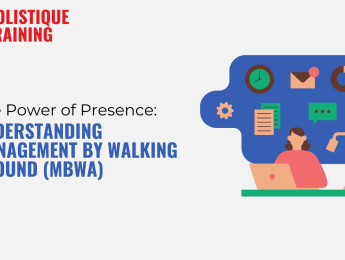- Table of Contents
- Key Principles of Management by Walking Around (MBWA)
- Benefits of Management by Walking Around (MBWA)
- How to Implement Management by Walking Around (MBWA) Effectively
- Challenges and Limitations of Management by Walking Around (MBWA)
- The Future of Management by Walking Around (MBWA) in a Digital World
Management by Walking Around (MBWA) is a management approach where leaders actively engage with employees through informal, face-to-face interactions within the workplace. This concept emphasizes the importance of managers being present and accessible, facilitating open communication and building strong relationships with their team members. Originating from the practices of successful leaders like Tom Peters and Robert Waterman in their 1982 book "In Search of Excellence," MBWA has its roots in the idea that direct observation and casual conversations can lead to greater insights into operational challenges and employee needs. By moving away from traditional, formal management practices, MBWA aims to foster a more dynamic and responsive organizational environment.
Key Principles of Management by Walking Around (MBWA)
Management by Walking Around (MBWA) is grounded in several key principles that make it a distinctive and effective management approach. Active presence in the workplace is central to MBWA, where managers make a deliberate effort to be visible and accessible to their employees. This physical presence allows managers to engage directly with staff, observe operations firsthand, and gain a deeper understanding of day-to-day challenges and successes. Informal communication and open dialogue are also crucial principles of MBWA. By engaging in casual conversations rather than formal meetings, managers create an environment where employees feel more comfortable sharing their thoughts and concerns. This approach fosters open communication and helps in building a more transparent organizational culture. Furthermore, building relationships and trust is an essential component of MBWA. When managers regularly interact with their team members, they not only build rapport but also demonstrate their commitment to understanding and addressing employee needs. This trust and relationship-building can lead to higher employee morale, greater job satisfaction, and a more collaborative work environment.
- Active Presence in the Workplace:
- Managers regularly visit different departments and areas.
- Observes and interacts with employees during their daily tasks.
- Gains firsthand insights into the operational challenges and successes.
- Informal Communication and Open Dialogue:
- Engages in casual, unstructured conversations with employees.
- Encourages employees to voice their opinions and ideas freely.
- Creates a culture of transparency and approachability.
- Building Relationships and Trust:
- Develops personal connections with team members.
- Shows genuine interest in employees' well-being and professional growth.
- Enhances employee morale and fosters a supportive work environment.
Benefits of Management by Walking Around (MBWA)
Management by Walking Around (MBWA) offers several significant benefits that contribute to a more dynamic and responsive organizational environment. Improved employee engagement and morale is one of the foremost advantages. When managers actively engage with their employees through regular, informal interactions, it demonstrates a genuine interest in their work and well-being. This proactive approach can lead to increased job satisfaction and motivation among staff, as they feel valued and heard. Additionally, MBWA facilitates enhanced understanding of daily operations. By being present on the floor, managers can observe workflows, identify bottlenecks, and gain insights into how different parts of the organization function. This direct involvement helps managers make more informed decisions and implement effective solutions. Another critical benefit is the early identification of problems and opportunities. Through regular, informal conversations and observations, managers can detect issues before they escalate and spot opportunities for improvement or innovation. This proactive stance allows for timely intervention and better strategic planning. Lastly, strengthened leadership visibility is a key benefit of MBWA. When managers are frequently seen and engaged with their teams, they reinforce their presence and leadership role. This visibility helps in building credibility and trust with employees, leading to a more cohesive and aligned team.
- Improved Employee Engagement and Morale:
- Demonstrates genuine interest in employee well-being and contributions.
- Increases job satisfaction and motivation through personal interaction.
- Fosters a positive work environment where employees feel valued.
- Enhanced Understanding of Daily Operations:
- Provides managers with firsthand insights into workflows and processes.
- Identifies operational challenges and inefficiencies.
- Supports more informed decision-making and problem-solving.
- Early Identification of Problems and Opportunities:
- Allows managers to detect issues before they escalate.
- Spots potential areas for improvement or innovation.
- Facilitates timely intervention and strategic adjustments.
- Strengthened Leadership Visibility:
- Reinforces the manager's presence and role within the organization.
- Builds credibility and trust through regular interaction.
- Enhances overall team cohesion and alignment.
How to Implement Management by Walking Around (MBWA) Effectively
Implementing Management by Walking Around (MBWA) effectively requires a strategic approach to ensure that it delivers the intended benefits and avoids potential pitfalls. Setting clear objectives for MBWA is the first step. Managers should define specific goals for their MBWA activities, such as improving employee engagement, understanding operational challenges, or fostering open communication. Clear objectives help in aligning MBWA efforts with organizational goals and provide a benchmark for evaluating success. Following this, best practices for managers are crucial to maximize the effectiveness of MBWA. Managers should schedule regular, informal visits to various departments, actively engage in conversations with employees, and be approachable and attentive. It’s important for managers to listen actively and show genuine interest in employees' feedback and observations. Equally important is avoiding common pitfalls that can undermine the effectiveness of MBWA. Managers should be cautious not to come across as intrusive or overly critical during their visits. It’s essential to strike a balance between being present and allowing employees to perform their duties without undue interference. Additionally, avoiding a one-size-fits-all approach is vital; MBWA should be adapted to fit the unique culture and needs of each organization.
- Setting Clear Objectives for MBWA:
- Define specific goals for MBWA activities, such as enhancing engagement or identifying issues.
- Align MBWA efforts with broader organizational objectives.
- Establish criteria for measuring the success of MBWA implementation.
- Best Practices for Managers:
- Schedule regular, informal visits to different areas of the organization.
- Engage in active listening and show genuine interest in employees' perspectives.
- Be approachable and maintain an open, non-judgmental demeanor.
- Avoiding Common Pitfalls:
- Prevent being perceived as intrusive or overly critical during interactions.
- Balance visibility with allowing employees to work without undue disruption.
- Customize MBWA practices to align with the organization's unique culture and needs.
Table: Table: Effective Implementation of Management by Walking Around
Aspect | Details |
Setting Clear Objectives | - Define specific goals (e.g., enhancing engagement, identifying issues). - Align with organizational objectives. - Establish success criteria. |
Best Practices for Managers | - Schedule regular, informal visits. - Engage in active listening and show genuine interest. - Be approachable and maintain an open demeanor. |
Avoiding Common Pitfalls | - Avoid being perceived as intrusive or overly critical. - Balance visibility with minimal disruption to work. - Customize MBWA to fit organizational culture. |
Challenges and Limitations of Management by Walking Around (MBWA)
While Management by Walking Around (MBWA) offers numerous benefits, it also comes with challenges and limitations that must be addressed to ensure its effectiveness. Potential misconceptions and misuse of MBWA can be significant hurdles. Some employees may view a manager's presence as mere surveillance or an attempt to micromanage, rather than as a genuine effort to engage and support. This misunderstanding can lead to discomfort or resistance, undermining the intended positive impact of MBWA. Another challenge is balancing MBWA with other management styles. Managers must ensure that MBWA complements rather than conflicts with other management approaches, such as structured meetings or performance reviews. Overemphasis on MBWA might lead to neglecting formal processes and systems that are also crucial for organizational success. Finally, adapting MBWA to different organizational cultures presents its own set of challenges. What works well in one organization may not be suitable in another due to differences in organizational culture, hierarchy, or employee expectations. Managers need to tailor their MBWA practices to fit the specific context and cultural norms of their organization to avoid potential conflicts or misunderstandings.
- Potential Misconceptions and Misuse:
- Employees may perceive MBWA as intrusive or a form of micromanagement.
- Misunderstanding of MBWA's intent can lead to discomfort or resistance.
- Clear communication about the purpose of MBWA is essential to avoid negative perceptions.
- Balancing MBWA with Other Management Styles:
- Ensure MBWA complements rather than overshadows other management practices.
- Maintain a balance between informal interactions and formal processes.
- Integrate MBWA with structured meetings and performance reviews for a holistic approach.
- Adapting MBWA to Different Organizational Cultures:
- Customize MBWA practices to align with the organization's specific cultural norms.
- Consider hierarchy, employee expectations, and organizational structure when implementing MBWA.
- Be flexible and responsive to feedback on how MBWA is received within the organization.
The Future of Management by Walking Around (MBWA) in a Digital World
As the workplace evolves, the principles of Management by Walking Around (MBWA) must adapt to new work environments and technological advancements. Adapting MBWA in remote and hybrid work environments is a key challenge. Traditional MBWA relies on physical presence, but with more organizations adopting remote and hybrid models, managers need to find new ways to connect with their teams. This could involve regular virtual check-ins, using video conferencing tools for face-to-face interaction, and creating digital channels for informal communication. Ensuring that employees feel engaged and supported in these settings requires innovative approaches to maintaining the personal touch that MBWA traditionally provides. Additionally, incorporating technology in MBWA practices can enhance its effectiveness. Digital tools and platforms can be used to facilitate real-time communication, gather feedback, and monitor team dynamics. For instance, using collaboration tools and employee engagement software can help managers stay connected and informed about their team's needs and concerns. Technology can also assist in analyzing data related to employee performance and engagement, offering insights that can be used to tailor MBWA strategies.
- Adapting MBWA in Remote and Hybrid Work Environments:
- Implement regular virtual check-ins and team meetings via video conferencing.
- Use digital communication tools to maintain informal and open interactions.
- Develop strategies to ensure employees in remote or hybrid settings feel engaged and supported.
- Incorporating Technology in MBWA Practices:
- Utilize collaboration and project management tools to stay connected with team members.
- Leverage employee engagement software to gather feedback and monitor morale.
- Analyze data from digital platforms to gain insights and refine MBWA approaches.
Conclusion
Management by Walking Around (MBWA) has profoundly impacted modern management by emphasizing the value of direct, informal interactions between leaders and employees. By regularly engaging with their teams in a non-structured manner, managers can gain deeper insights into daily operations, address issues proactively, and enhance employee engagement and morale. MBWA fosters an environment of open communication and trust, contributing to a more dynamic and responsive organizational culture. As workplaces continue to evolve, the principles of MBWA remain crucial, highlighting the importance of maintaining a personal connection with employees amidst changing work environments. Embracing MBWA not only supports effective management practices but also underscores the enduring value of leadership visibility and genuine employee engagement in achieving organizational success.

























